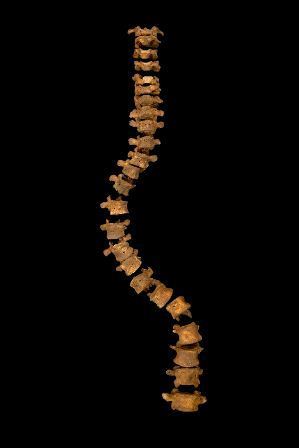Digging for Richard
© University of Leicester
BY DAVID HORSPOOL
Our reviewer Alex Burghart quoted his old history tutor in the TLS not long ago: "Archaeologists", this sage opined, "are a pain in the arse. They think they know better than the texts and they will find things." As Burghart went on to say, "If the first point is unfair, the second is undeniably true." Monday's events in Leicester brought these words to mind. But if we grant that, sensible scepticism aside (and see Mary Beard's blog), the bones in the social services car park are those of Richard III, does that "change the history books", as we have repeatedly been told? This week in the TLS, Sarah Knight and Mary Ann Lund of the University of Leicester trace literary and historical accounts of the King's deformity from the chronicler John Rous onwards.
What Richard might have looked like is naturally of interest, and if accounts of his physical appearance match chroniclers' descriptions, that could make other aspects of those accounts more credible. Carbon dating and DNA evidence may not be quite as cut and dried as some would like, but that's nothing compared to literary historical evidence. Amid the excitement about the Leicester discovery, some party poopers have wondered whether the University's media management was not as important a part of the story as the discovery itself. But if the archaeologists and scientists are above criticism for their scrupulous approach to their "one in a million" find, the historical material published on the University website associated with the dig falls rather below those standards.
The partners of the University in this dig are the Richard III society, whose specific purpose is the rehabilitation of the reputation of the King. So when the University site tells you of the Princes in the Tower that "Young Edward and his brother moved into the Tower of London (which was then a royal palace, not a prison) but in June their parents’ marriage was declared invalid", it's worth pointing out that, actually, the Tower had been used as a prison for many years (William the Conqueror's eldest son was imprisoned there in 1106, for example), and the fact that the marriage was declared invalid was almost certainly part of an orchestrated campaign conducted by Richard to clear his path to the throne.
"Ricardians", as the King's advocates are known, may feel their man will get a better press from now on, despite (or because of?) the fact that, contrary to their previously widely held theories, Richard does indeed seem to have sufferred from a spinal deformity. But the emotions surrounding this extraordinary discovery shouldn't have any influence on what we think Richard did, or how he lived.
Peter Stothard's Blog
- Peter Stothard's profile
- 30 followers




